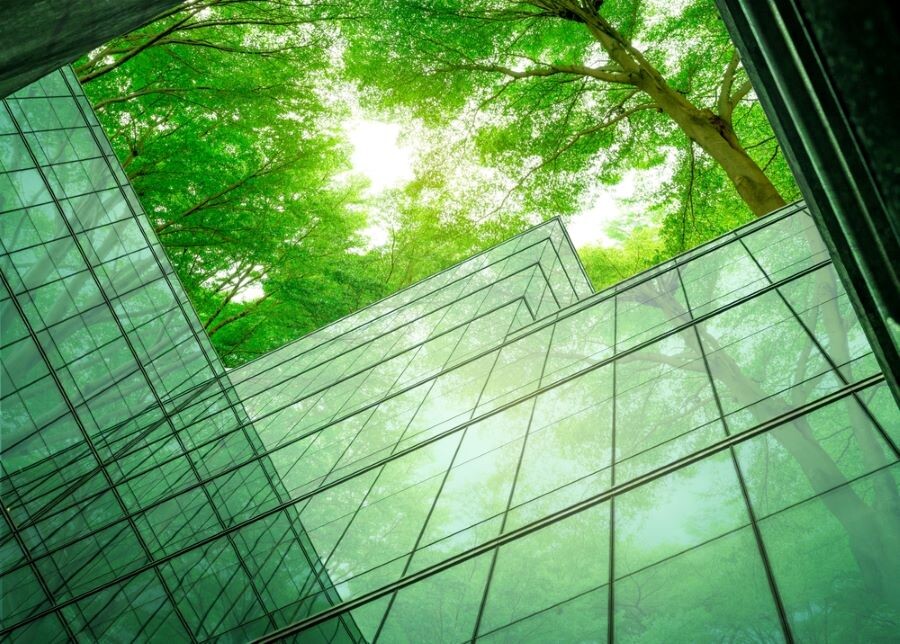How Sick Building Syndrome Can Be Reduced With Green Structures
By Beth Rush
Sick building syndrome (SBS) occurs when occupants feel ill inside a structure. The usual symptoms people with this condition experience include headache, dizziness and nausea, eye, nose or throat irritation, itchy skin, acute discomfort, concentration difficulties and odor sensitivities. These health problems usually stem from issues with the structure itself.
Unlike diseases — medical conditions with a definite cause — SBS doesn’t have a clear-cut source, but it’s not a myth. A body of research associates it with air contaminants within the building.
SBS hurts businesses’ bottom lines. Its incidence translates to profit losses due to decreased productivity and high health insurance costs. This corporate headache has plagued entrepreneurs for decades, but hope is on the horizon with the advent of green buildings.
How Do Green Buildings Improve Health?
Eco-friendly commercial spaces optimize features to minimize environmental impact in various areas — such as energy and water consumption, waste management, and virgin resource conservation. They also prioritize building occupants’ safety and wellness.
How do green buildings improve people’s health? They generally lessen workplace SBS incidence in the following ways.
Eliminating Combustion Emissions
Green building architects consider fossil fuel decoupling as the first order of business. Electrified heating, ventilation and air conditioning (HVAC) equipment is synonymous with eco-friendly properties, so burning natural gas, heating oil, and propane for space and water heating is prohibited.
Using zero fossil fuel to keep building occupants comfortable isn’t necessarily beneficial for the environment, as electricity may still come from dirty energy sources. However, it’s always good for health.
Fossil fuel combustion contaminates indoor air, releasing harmful fumes. Some are colorless, odorless, tasteless and deadly. An excellent case in point is carbon monoxide, which hospitalizes more than 100,000 individuals and kills about 420 yearly. Nitrogen dioxide isn’t a silent killer but is a notorious respiratory illness culprit.
Many green building certifications focus on curbing greenhouse gases, indirectly promoting excellent indoor air quality — a surefire way to combat SBS.
Minimizing Off-Gassing
Off-gassing is when products emit chemicals — collectively known as volatile organic compounds (VOCs) — into the air. This process can take days to years, depending on how much VOC content their sources have. These contaminants may linger much longer because older items in storage may continue releasing hazardous fumes.
You may not have heard of VOCs before, but you’ve encountered them. The distinct smell of a brand-new item originates from these indoor air pollutants. Inhaling these chemicals can trigger SBS symptoms. Long-term exposure endangers the central nervous system, kidneys and liver. Some VOCs are even carcinogenic.
VOCs may still exist in green buildings, but sustainability-minded construction professionals deliberately use eco-friendly paints and stains to keep them healthy. These greener products may contain zero or low levels of VOCs, biocides and fungicides. Eco-friendly paints and stains use water-based formulas, natural ingredients and safer fungal growth deterrents, like zinc oxide.
Reducing Particulate Matter
Environmentally sound office buildings keep indoor air fresh by neutralizing outdoor pollution. They use greenery to prevent particulate matter of various sizes — including dust, dirt, soot, smoke and microscopic liquid droplets — from getting in.
Roadside vegetation barriers can capture or divert these inhalable airborne particles from the building. Either way, particulate matter doesn’t end up in someone’s lungs or bloodstream.
Green buildings place trees in the yard to catch and remove particulates in the air. Although most of them stay on tree surfaces temporarily, they may disappear in stormwater runoff or return to the soil.
Filtering Out Air Contaminants
Sustainability-driven architects understand reducing indoor pollutants to zero is impossible. These professionals use various filtration solutions to keep environmental contaminants and biological agents of illness — including bacteria, viruses, fungi, pollen, animal dander and cat saliva — from staying in the air for too long.
Commercial HVAC units use advanced filters to purify respiratory irritants and allergens from the air, preventing them from spreading throughout the office. People working in well-ventilated spaces with above-average indoor air quality cognitively outperform their counterparts in offices exposed to typical pollutant levels.
Many architects introduce interior landscaping to prevent carbon dioxide from accumulating in enclosed spaces, for such buildup can spell disaster for the physical well-being of company employees and visitors. Green walls serve as a net for trapping particulate matter.
Besides improving indoor air quality, buildings designed with living architecture can reduce people’s stress and anxiety levels. Indoor greenery satisfies biophilia — humans’ innate desire to be with nature. Biophilic elements make built environments feel more like the outside world, helping people with SBS recover faster.
Keeping Moisture Levels in Check
Green buildings prioritize moisture control. Wet air and damp areas allow harmful biological organisms to thrive, multiply and colonize indoor spaces full of organic substances. Architects counter this by designing indoor environments that keep relative humidity below 60% more efficiently and use no cold-condensing surfaces.
Promoting Daylighting
Natural light can be a cure for nonrespiratory-related SBS. Daylighting has numerous health benefits, including enhanced eyesight, restful sleep and improved mood.
Eco-friendly office designers use various techniques to maximize natural light penetration. They mix exterior shading and control devices, reflective surfaces, high-performance glazing, optimal aperture locations and integration with artificial lights to catch as much sun as possible.
Leverage Nature to Reduce Workplace SBS Incidence
SBS claims will never go away. No company has the resources to investigate every single allegation’s validity. Still, you have an antidote to SBS in green spaces. Get your office audited for indoor air quality improvement opportunities and be certified to demonstrate your commitment to building occupants’ health, comfort and safety.
About the Author: Beth Rush is the green wellness editor at Body+Mind. She has more than five years of experience writing and editing articles covering topics like sustainable transit and the importance of green spaces in urban planning. You can find Beth on Twitter @bodymindmag.
Subscribe to Body+Mind for more posts by Beth!
